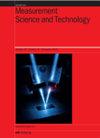使用基于麻雀搜索算法的改良型深度极端学习机进行预测工具穿戴
IF 3.4
3区 工程技术
Q1 ENGINEERING, MULTIDISCIPLINARY
引用次数: 0
摘要
精确的刀具磨损监测对于提高刀具寿命和加工生产率至关重要。虽然许多预测模型可以达到很高的预测精度,但也存在面对不同工作条件或刀具信号时稳定性差等问题。为解决这一问题,本文提出了一种基于改进型深度极端学习机(DELM)的刀具磨损预测方法,利用麻雀搜索算法(SSA)升级 DELM 的输入权重以改进模型,然后从多传感器信号中提取时域、频域和时频域特征,构建并测试改进型模型 SSA-DELM。验证结果表明,所提出的模型能准确反映刀具磨损情况。同时,与未改进的 DELM、PSO-LSSVM、LSTM、SSAE、RNN 和 DBO-DELM 相比,建议模型的 RMSE 分别降低了 53.39%、19.95%、43.86%、23.80%、24.80% 和 3.72%,MAE 分别降低了 67.81%、17.87%、32.70%、29.90%、30.30% 和 6.78%。本文章由计算机程序翻译,如有差异,请以英文原文为准。
Prediction tool wear using improved deep extreme learning machines based on the sparrow search algorithm
Accurate tool wear monitoring is crucial for increasing tool life and machining productivity. Although many prediction models can achieve high prediction accuracy, there are problems such as poor stability in the face of different working conditions or tool signals. A tool wear prediction method based on improved deep extreme learning machines (DELM) was proposed as a solution to this issue; it uses the sparrow search algorithm (SSA) to upgrade the input weight of DELM to improve the model, and then extracts the time-domain, frequency-domain, and time-frequency domain characteristics from multi-sensor signals to construct and test the improved model SSA-DELM. The verification results show that the proposed model accurately reflects the tool wear. Meanwhile, the RMSE of the proposed model decreased by 53.39%, 19.95%, 43.86%, 23.80%, 24.80%, and 3.72%, respectively, and the MAE decreased by 67.81%, 17.87%, 32.70%, 29.90%, 30.30%, and 6.78%, respectively, compared to the with unimproved DELM, PSO-LSSVM, LSTM, SSAE, RNN, and DBO-DELM.
求助全文
通过发布文献求助,成功后即可免费获取论文全文。
去求助
来源期刊

Measurement Science and Technology
工程技术-工程:综合
CiteScore
4.30
自引率
16.70%
发文量
656
审稿时长
4.9 months
期刊介绍:
Measurement Science and Technology publishes articles on new measurement techniques and associated instrumentation. Papers that describe experiments must represent an advance in measurement science or measurement technique rather than the application of established experimental technique. Bearing in mind the multidisciplinary nature of the journal, authors must provide an introduction to their work that makes clear the novelty, significance, broader relevance of their work in a measurement context and relevance to the readership of Measurement Science and Technology. All submitted articles should contain consideration of the uncertainty, precision and/or accuracy of the measurements presented.
Subject coverage includes the theory, practice and application of measurement in physics, chemistry, engineering and the environmental and life sciences from inception to commercial exploitation. Publications in the journal should emphasize the novelty of reported methods, characterize them and demonstrate their performance using examples or applications.
 求助内容:
求助内容: 应助结果提醒方式:
应助结果提醒方式:


